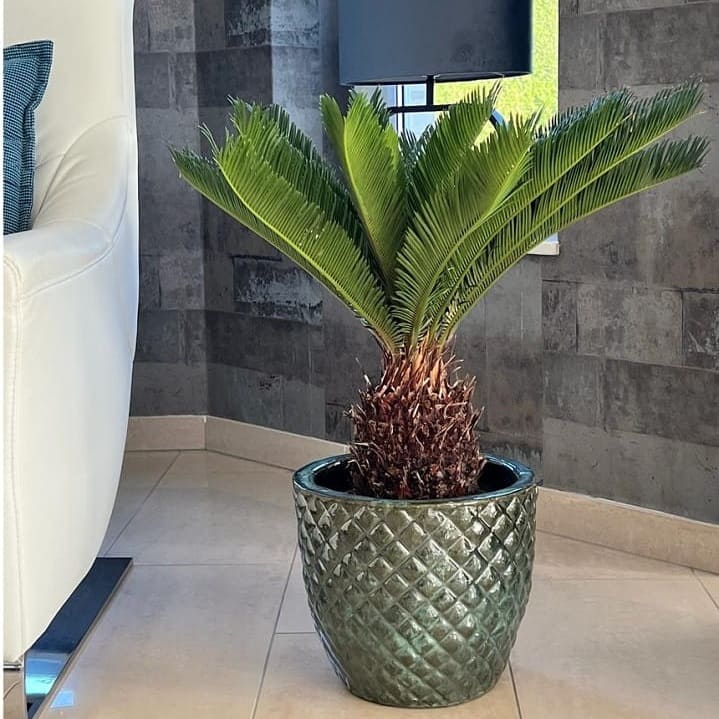
How to care for Phoenix roebelenii plant?
If you are looking for a beautiful, easily maintained palm plant for indoors, the Phoenix roebelenii hits the mark. This excellent choice is generally not large, so it can fit indoors well. This elegant palm tree is called the pygmy date palm, due to its very small date fruit. MyPalmShop will explain you how to take care of this beautiful palm tree, so that you can enjoy it for as long as possible.
Light and temperature
Phoenix roebelenii plants love clear, indirect light. Avoid too much direct sunlight, as it may cause sunburn. Place a pygmy date palm at a window at the north, east or west, or use curtains or similar items to filter light. Keep Phoenix roebelenii in a warm spot – it should never experience frost. The preferred temperature is between 18-24 degrees Celsius. Avoid placing it too close to air condition or heaters, as this will reduce the air humidity, potentially negatively impacting the plant. This can be mitigated by occasionally spraying the leaves with water.
Water and fertilizer
Phoenix roebelenii plants need regular watering. Provide water once the top layer of the soil feels dry. Do not give too much water, as that will work adversely and cause root rot. Make sure that the pot of your plant has drainage holes, so that surplus water is drained properly. Add fertilizer regularly, based on the fertilizer (generally every 1-2 months). We recommend slow release fertilizer, an easy-to-use fertilizer specially developed for palm trees. Always follow the instructions on any fertilizer you use. Overfertilizing will impact the growth of your plant negatively as well.
Repotting
Phoenix roebelenii palm trees generally do not require regular repotting, as they grow well in small pots. Once you notice the plant has outgrown its pot, you can replant the palm in Spring in a larger pot with fresh potting soil. As mentioned before, ensure that the pot in placed in a pot with drainage holes. Also, make sure to plant the palm at the same depth as in the old pot.
Pruning
Phoenix roebelenii plants require very little pruning. You can, however, cut off dead or damaged leaves. Use sharp and clean pruning shears for the best results. If you really want to prune the tree completely, do so in Spring.
Extra maintenance tips
If you follow the tips above, your Phoenix roebelenii should remain healthy for many years to come. Here are a few more tips to help take care of the plant even better.
Air humidity
Phoenix roebelenii palm trees love a humid environment. You can increase the air humidity at home by using a humidifier. Alternatively, you can simply put a dish with some water next to your plant. You can also spray the leaves of the palm with water to help them remain clean of dust and to increase the humidity as well.
Pests and diseases
Phoenix roebelenii plants are generally healthy and resistant against pests and diseases. Should you find any signs of pests or fungi, treat the plant as soon as possible with a suitable product. Removed infected leaves prevent further spread.
Discoloured leaves
If the leaves of your Phoenix roebelenii turn yellow, it may be an indication of too little or too much water, too much sunlight or a lack of nutrients. Adjust your watering or provide additional fertilizer. If the leaves keep turning yellow, try changing the location of your palm to find a more suitable spot.
Space
Phoenix roebelenii palms require some space to grow and spread their leaves. Avoid placing items or plants too close to the palm. Also, avoid placing the pygmy date palm too close to walls or furniture.





Comments (0)